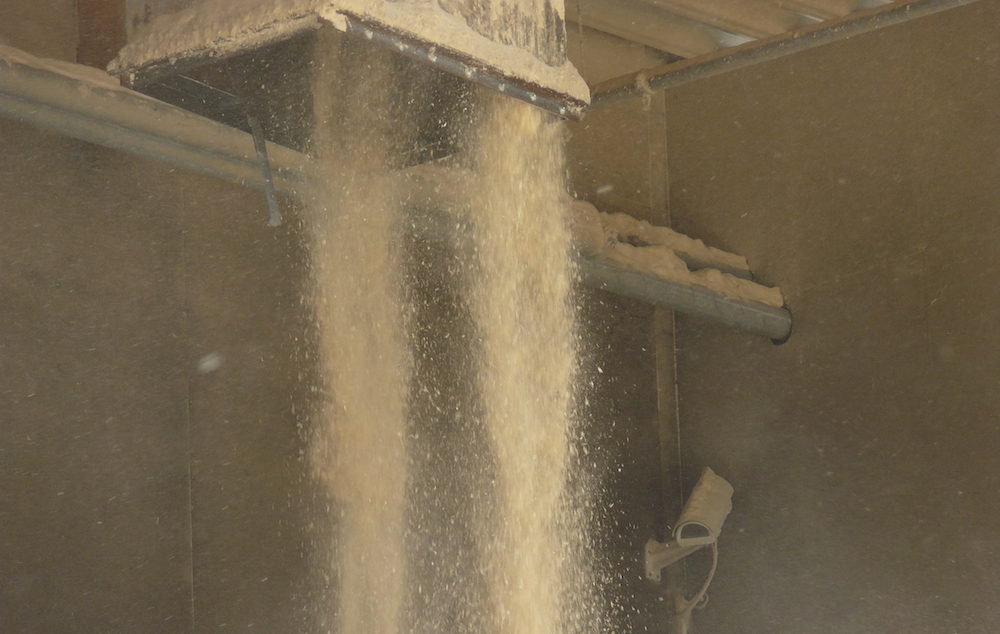
Implementing process safety principles to reduce combustible dust risks
July 13, 2023
By Alexandra Skinner
WorkSafeBC will be working with mills in the wood manufacturing industry, and focusing on processes where dust is generated, stored, or moved through conveyance systems.
 Photo: Annex Business Media
Photo: Annex Business Media Over the past 10 years, many mills in British Columbia have made important improvements to reduce the dangers of combustible dust in their facilities. This is crucial because if a dust management system doesn’t thoroughly assess and control all risks, it can create conditions that result in a dangerous fire or explosion.
To further decrease the risks associated with combustible dust, WorkSafeBC will be working with mills in the wood manufacturing industry, and focusing on processes where dust is generated, stored, or moved through conveyance systems. The goal of this effort is significant: it aims to prevent fatal explosions at mills, like the ones that occurred just over 10 years ago in Burns Lake and Prince George.
Process Safety in solid wood facilities
Process safety in wood manufacturing involves managing risks by implementing effective controls to prevent and mitigate the risks associated with fires, explosions, leaks, spills, equipment problems, corrosion, component failures, and unexpected situations.
While some employers are already well versed on the process safety approach, it has not been consistently implemented when it comes to dust control measures – especially in wood plants that are connected to pellet mills or energy plants.
“In the wood products sector, we’ve noticed that many facilities focus on cleaning up and removing dust. However, we need to pay more attention to the processes that create dust,” explains Budd Phillips, prevention field services manager at WorkSafeBC. “This includes areas where wood is chipped, areas where lathes are used, silos where combustible dust is stored, and especially the conveyance systems – like blower systems that transport dust to nearby pellet mills or energy generation plants.”
Sawmills connected to pellet mills or energy generation plants are becoming more common in wood manufacturing. Dust from the sawmill is transported through a conveyance system to neighboring facilities. If the dust cannot be used right away, it may be stored temporarily in silos – which could be located in the sawmill, pellet mill, or somewhere else along the conveyance system.
According to Phillips, while pellet plants have been successful in implementing process safety measures, in sawmill and other solid wood manufacturers there is room for improvement.
“These employers need to focus on mitigation efforts beyond dust cleanup – as conveyance and storage systems can introduce a wide range of risk factors if they are not properly designed, installed or maintained. It is critical to review and inspect the systems that convey the dust and also look for hazards associated with dust collectors, silos, bins, sanding machines and more,” he says.
Phillips suggests solid wood manufacturers re-evaluate how dust is managed by looking at process safety. This means looking at risks of personal injury, while also considering potential events that could cause serious harm to workers.
“Taking a process safety approach involves conducting detailed risk assessments and analyzing and identifying the main threats that could lead to catastrophic outcomes or failures. It is about managing the entire process, not just cleaning up – and then implementing effective controls to mitigate risks. This shift in mindset is necessary to ensure worker safety,” Phillips says.
In a process safety risk assessment, it is common to search for engineering solutions to address the risks involved – including using detection systems to monitor for sparks or changes in heat. However, if a risk does materialize, employers should also implement mitigation systems to lessen the impact. “Suppression systems, abort gates, alarms, and other elements can prevent potentially dangerous situations from spiraling out of control,” Phillips says.
Sawmills and pellet mills or energy generation plants need to collaborate to ensure that process safety risks are thoroughly evaluated and that their occupational health and safety plans address safety concerns related to conveyance systems and storage systems.
“WorkSafeBC is working with mills to add process safety principles to enhance their health and safety systems,” adds Phillips, “And we have resources for employers to support this process.”
Resources
WorkSafeBC has developed several resources to help employers evaluate their dust management plans.
- Combustible Dust: https://www.worksafebc.com/en/health-safety/hazards-exposures/combustible-dust
- Process safety: https://www.worksafebc.com/en/about-us/news-events/campaigns/process-safety
Alexandra Skinner is a manager of government and media relations with WorkSafeBC.
This article is part of Dust Safety Week 2023. To read more articles on dust safety, click here.
Print this page